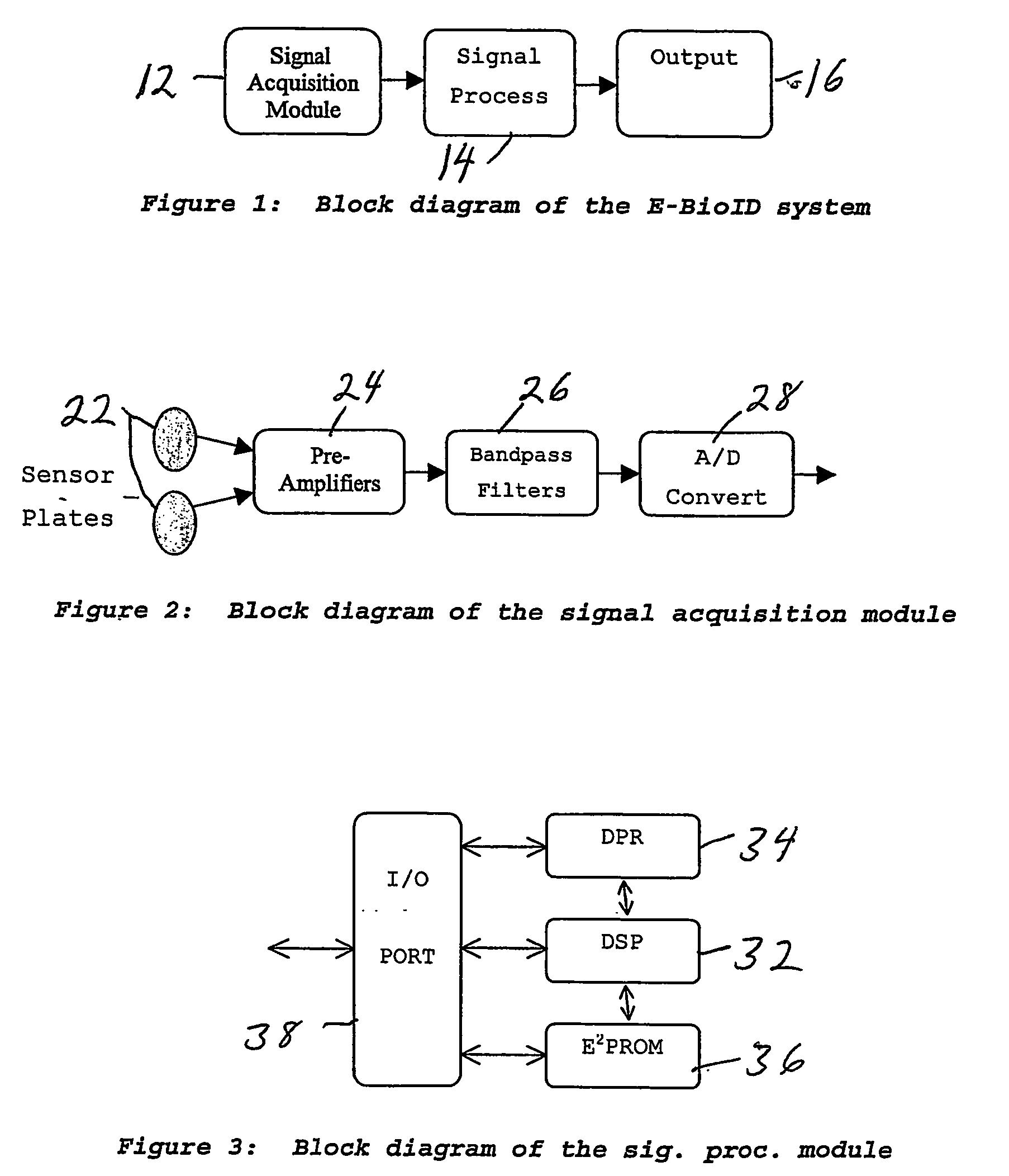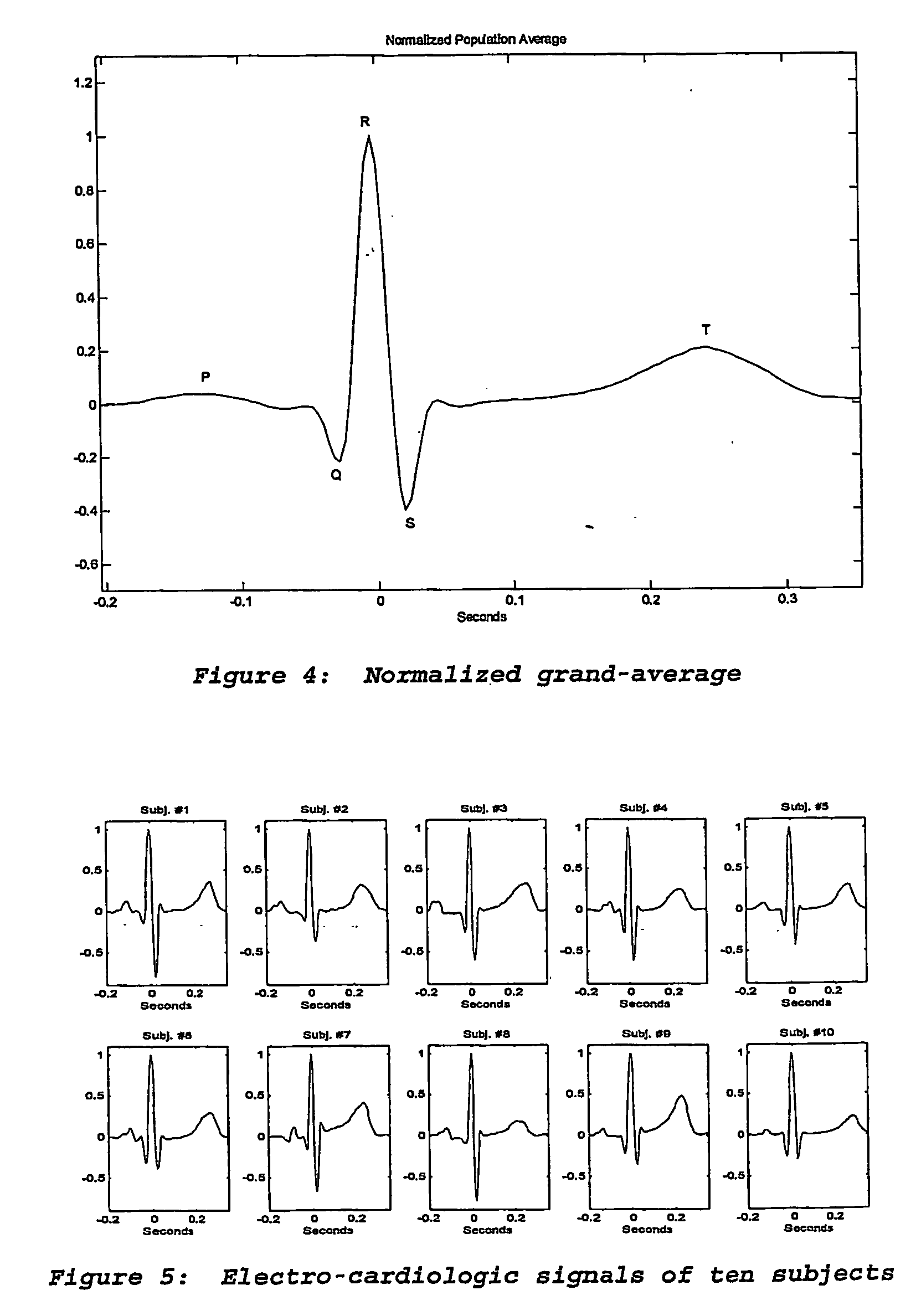Method and apparatus for electro-biometric identiy recognition
a biometric and identification recognition technology, applied in the field of electrobiometric identification and verification of persons identity, can solve the problems of operator attendance, imposing a substantial burden on users, and limited market penetration of technology
- Summary
- Abstract
- Description
- Claims
- Application Information
AI Technical Summary
Benefits of technology
Problems solved by technology
Method used
Image
Examples
Embodiment Construction
[0035] A preferred embodiment of a system according to the invention is designated an Electro-Biometric IDentification (E-BioID) system and is illustrated by way of example in FIG. 1. In this embodiment, the stored representation of the common features of the heartbeat patterns of the plurality of individuals is the average of the heartbeat patterns of the plurality of individuals. However, other embodiments can utilize stored representations of different types of common features, such as attainable with, for example, principal component analysis or wavelet decomposition
[0036] In a preferred embodiment, the basic elements of the E-BioID system include a signal acquisition module 12, a signal processing module 14, and an output module 16, implemented in a single housing. In another preferred embodiment, remote analysis of locally acquired electro-biometric signals may be implemented by separating the functional elements for signal acquisition, processing, and output. Each of the com...
PUM
 Login to View More
Login to View More Abstract
Description
Claims
Application Information
 Login to View More
Login to View More - R&D
- Intellectual Property
- Life Sciences
- Materials
- Tech Scout
- Unparalleled Data Quality
- Higher Quality Content
- 60% Fewer Hallucinations
Browse by: Latest US Patents, China's latest patents, Technical Efficacy Thesaurus, Application Domain, Technology Topic, Popular Technical Reports.
© 2025 PatSnap. All rights reserved.Legal|Privacy policy|Modern Slavery Act Transparency Statement|Sitemap|About US| Contact US: help@patsnap.com



